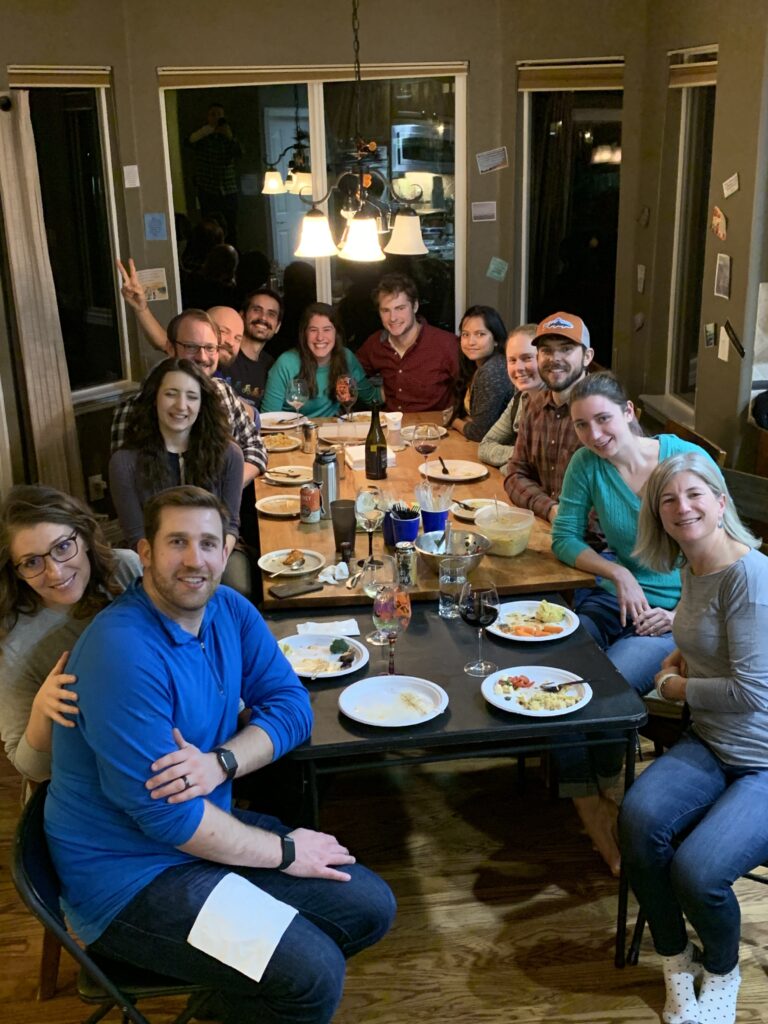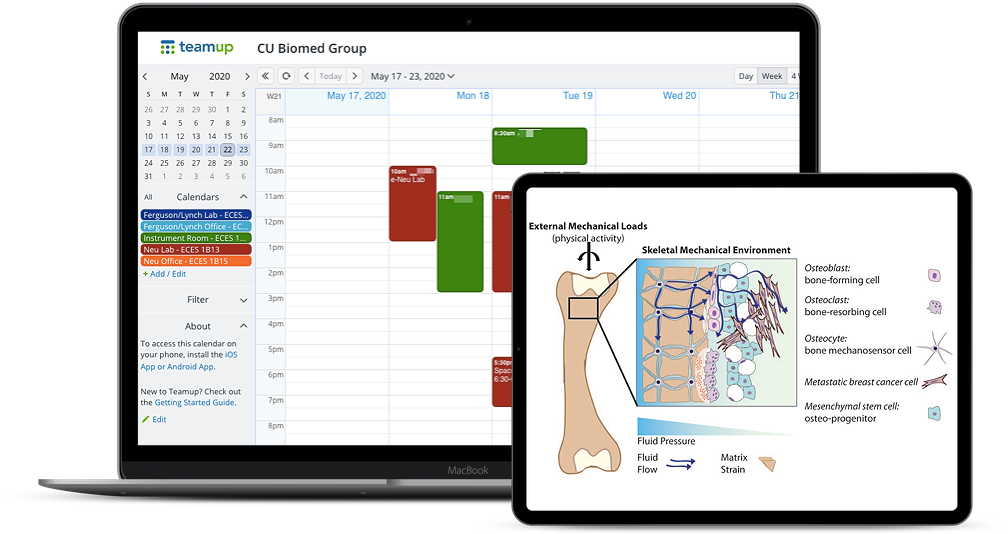Last updated Sep 20, 2022
Research teams at universities are finding new ways to work amidst the Covid-19 safety regulations in place. Converting to remote work entirely is not possible for many research teams. Research often requires specialty equipment and hands-on time in a shared lab space. As universities and other research facilities begin to slowly and carefully return to work, managing research and scheduling shared lab space takes care and thought.
How these research teams are working
At the University of Colorado Boulder, three Principal investigators are coordinating with their teams to schedule shared research lab space:

We are all based out of the Mechanical Engineering Department and our space is shared by three Principal investigators (Ferguson, Lynch, Neu), all of whom have a strong mechanical engineering background but utilize that expertise in biomedical research. Across the groups, we focus on both hard and soft tissue material characterization as well as implementing potential replacements, therapies, and novel biomaterials.
- Professor Virginia (Ginger) Ferguson‘s primary research area is focused on biological tissues. The group specializes in studying how the quality or the underlying microstructure, composition, and material properties of tissues influence the resulting mechanical behavior and, especially, how these behaviors are altered by disrupted mechanical loading, aging, or disease.
- Professor Maureen Lynch‘s research program focuses on the skeletal mechanical environment and its regulation of cancer. Their long-term goal is to identify novel therapeutic targets for treating and preventing bone metastases as well as cancer-associated reductions in bone strength.
- Professor Corey Neu and team desire to provide new therapies that emerge from a careful study of basic mechanobiology, to ultimately treat the millions of people worldwide afflicted with disorders of the connective and cardiac tissues, including arthritis and fibrosis, and to promote basic quality of life in humans.
Scheduling shared lab and equipment among research teams

Over 20 individuals from these 3 research groups need to coordinate to schedule five shared spaces. They need to ensure that everyone gets adequate lab time, office time, and access to tools, materials, and instruments.
In addition, they need to keep track of who is using which space.
New guidelines require us to limit total occupancy and monitor who has been in which spaces. The Teamup platform will allow us a means to both book research space and a log of who was occupying each space.
The goal is a simple, shared, easy-to-use calendar that will not overload any one person or group with calendar administration for managing research. This can be done by allowing calendar access to individual team members, so that each person or group can book their own lab time.
The ability of all users to both view and book their own time reduces the burden of any one person needing to take on this additional scheduling work and will allow all to be more productive.
Then these hard-working researchers can get back to their real work, while staying safe and healthy.
Managing research and scheduling shared lab spaces

Here’s one way you could set up a calendar for scheduling shared lab and managing research equipment:
- Create one sub-calendar for each separate shared lab space or resource.
- Disallow overlapping events for resources or spaces which can only accommodate one person at a time, so that there can be no accidental double-booking.
- Edit the About box with instructions for team members, for example:
- how many people can book space in the lab at the same time.
- special instructions for sanitizing equipment.
- guidelines for protective wear, masks, gloves, etc.
- Add each research team member as an account-based calendar user.
- Include only the calendars (spaces) relevant for each team member.
- Give each team member the modify-from-same-link permission for each calendar included.
- This permission allows team members to add and modify their own events, but not add, modify, or remove events created by other calendar users.
- Each team member can download Teamup mobile app (available for iOS and Android) and use the Teamup calendar on a web or mobile browser.
- Each team member can book their own lab times on the shared calendar, so no one is bogged down with the work of scheduling shared lab space or equipment.
- They can easily see which times are available for each shared space.
- They can put their name in the title for the booked lab time.
- Each booked event will also have a record of who added and/or modified it.
- Team members can use event comments to leave notes, confirm times, or even ask to switch booked lab time if needed.
- Multiple calendar views and filters make it easy to see open lab times:
- The Timeline view shows each calendar in its own row for easily seeing open times over multiple days. Try a live demo →
- The Scheduler view shows each calendar in its own column for detailed view of the schedule for a single day.
- Filter by keyword or sub-calendar to see only the relevant space or resource when using the calendar.
Thanks to Kristine Fischenich for sharing your story with us!

